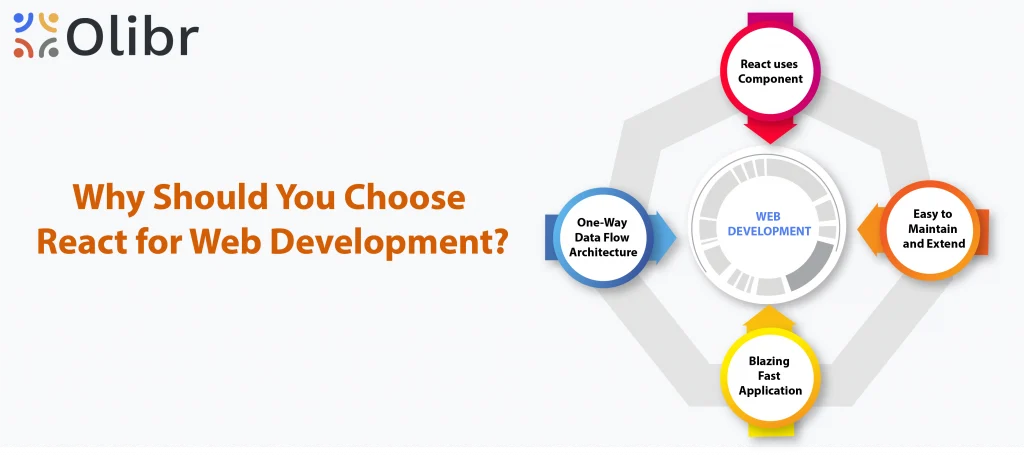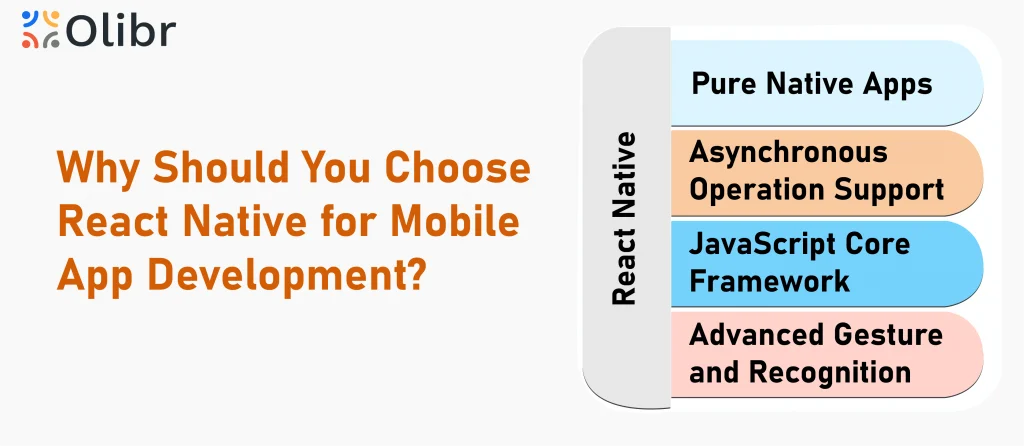Table of Contents
ToggleIntroduction
According to the Statista survey report of 2023, React is the second most used framework worldwide with 40.58% of respondents. Developed by Facebook, React and React Native are popular technologies today. Both technologies are open source. React is the library for building web UI, and React Native is the framework used for mobile applications. Though they’re used for different purposes, they do share core algorithms to handle state and props, JSX, and react hooks. One common thing between these two technologies is that both technologies use components. Thus, components encourage the use of code reusability and modularity. In this article, we will explore these two renowned technologies.
React.js: Library for Web UIs
React is not a framework but one of the popular JavaScript libraries. It was created to meet the demands of large applications that can change data frequently. React is different than any other JavaScript library or framework because it does not use HTML directives and templates; instead, it uses components.
Must Read: 16 Best React.js Frameworks to Use in 2023
Why Should You Choose React for Web Development?

- React uses Component: Generally, while developing webpages developers do keep separate code for HTML and JavaScript; however, React follows a different approach. It uses a component that combines two separate codes into one unit. In other words, components allow developers to use the features and functionality of HTML and JavaScript in an encapsulated manner. As a result, it aids in code organization and helps developers to build dynamic interactive UIs.
- One-Way Data Flow Architecture: This architecture follows the data in one direction. To trace and modify the changes in one hierarchy is straightforward. Thus, it provides hassle-free code maintenance and testing.
- Easy to Maintain and Extend: Developers can easily add new features and functionality to web UI through components. Besides, managing the code through unified structure and logic over time is super easy.
- Blazing Fast Application: Virtual DOM makes the React application perform super fast by executing every operation efficiently. Whenever there are any data updates, it reflects the changes in the virtual DOM first and applies those changes in the DOM. Diffing algorithm, on the other hand, ensures only the necessary parts of the application are updated in the actual DOM. This results in faster rendering and contributes to the application’s responsiveness.
React Native: Cross-platform Mobile Apps Development
React Native is a popular open-source framework for developing cross-platform mobile apps for iOS and Android using JavaScript. It came into existence in 2015 and since then it has become an “Instant Favourite” among mobile app developers. Because one doesn’t need to be skilled in iOS and Android programming. Developers can write one code in JavaScript and share it across iOS and Android. Therefore, it increases the productivity rate of developers and faster time to market. Some of the prominent examples of apps built using React Native are Instagram, Skype, Pinterest, Facebook, Uber Eats, and many more.
React Native: A New Ray of Hope for Mobile App Development
The demand for mobile apps has seen an unprecedented surge in the market; since the first release of Smartphones. This led to a significant rise in mobile app development. But at the same time, the mobile industry posed a challenge to meet the demands of two separate customer bases with distinct operating systems i.e., Android and iOS. Thus, this was a huge concern for the mobile app development industry. On top of that, developing an application in more than one language in a short duration was not easily accessible. Also, the process was time-consuming and outrageously expensive.
To bridge the gap of development of more than one platform, creators came up with the idea of a cross-platform technique. This technique allows developers to use a single code and share it between the different operating systems, which can give a native look and feel. Finally, Facebook created a React Native framework to address all these issues by providing Native APIs and platform-specific features. Today almost all of the mobile industry uses React Native for its cross-platform ability, maintaining the low cost, and reusable components. Verified market research shows that the React Native app development market is expected to increase by $364.54 billion in the year 2028.

Don't miss out on your chance to work with the best
apply for top global job opportunities today!
Why Should You Choose React Native for Mobile App Development?

- Pure Native Apps: Unlike other frameworks, React Native runs different parts of the layout in separate threads. Whenever developers make changes in any of these layouts, React Native doesn’t mess things up. It keeps the main thread free so that developers can update the UI anytime. As a result, this promotes smooth UI rendering.
- Asynchronous Operation Support: This feature allows the application to operate multiple operations in the background without blocking the UI. Developers can debug the code while the application is still running.
- JavaScript Core Framework: It uses the JavaScriptCore framework to work seamlessly with Android and iOS. This allows JavaScript and Objective-C to communicate and call the functions. Similarly, it introduced native Kotlin and Java API for the JavaScript Core framework. This simplifies mobile app development to a high degree.
- Advanced Gesture and Recognition: React Native provides utilities such as PanResponder, RotationResponder, and PinchResponder for advanced gestures. For multiple touches that occur concurrently, it uses abstract Touchable and TouchableHighlight.
Comparision Table: React vs React Native
| Feature | React (Web) | React Native (Mobile) |
|---|---|---|
| Platform | Web | Mobile (iOS, Android) |
| Development Language | JavaScript | JavaScript (React Native extensions) |
| DOM Handling | Virtual DOM | No DOM, uses Native Components |
| User Interface | HTML and CSS | Native UI Components |
| Styling | CSS | Flexbox, StyleSheet (React Native styles) |
| Access to Device Features | Limited | Full access (camera, GPS, etc.) |
| Navigation | React Router | React Navigation (or other third-party libraries) |
| Performance | Generally Fast | Near-native performance |
| Development Time | Typically, shorter | Typically, shorter |
| Community and Libraries | Large and Mature | Growing, but not as extensive as React |
| Code Reusability | Some components can be reused | High code reusability (up to 90%) |
| Learning Curve | Moderate | Moderate (if familiar with React) |
| Debugging | Browser Dev Tools | Chrome Dev Tools or React Native Debugger |
| Deployment | Deploy as a web app | Compile to native code for each platform |
| Updates and Maintenance | Easier to manage | Slightly more complex due to app stores |
| Community and Ecosystem | Broad ecosystem with numerous libraries and tools | Growing ecosystem with React Native-specific libraries |
| Popularity | Widely used for web development | Popular for mobile app development |
Final Words
Both of these are extremely useful tools. React is incredibly popular for web development whereas React Native is a well-liked framework for cross-development of mobile applications.
React lets developers create impressive UI for web apps easily by breaking down the components into smaller reusable parts. These reusable components allow developers to build a comprehensive structure. Not only that but to scale and maintain the complex UI is easy as pie. Whenever there are any changes that the developer wants to make, they can simply make the required changes without causing a mess in the rest of the application.
Apart from that, Virtual DOM improves the overall performance of React applications. With tons of features and plugins, it can speed up the development process. Using React, developers can create a lightning-fast web application as well as offer a dynamic experience to users.
React Native is the best solution for cross-platform mobile app development. Using it, developers don’t need to deal with the complexities of individual programming languages of operating systems. It lets developers leverage the features of React and its core components such as state management and Virtual DOM. It also enables access to the Native APIs and platform-specific features through which developers can easily blend into the native environment with a single codebase. Furthermore, React Native code directly converts into the native without any glitches. This in return makes mobile apps fast.
In terms of code easiness, React is easy to grasp and user-friendly. If you’re familiar with JavaScript then learning React would not take much time. But React Native might be hard for someone with zero experience. As it requires an understanding of the basics of Object-C and Java.
Take control of your career and land your dream job
sign up with us now and start applying for the best opportunities!

Frequently Asked Questions
Through React Native single development team can create mobile apps on various platforms using a single codebase. This significantly minimizes redundancy in code and maintains consistency across different platforms.
Yes. React scalability and flexibility make it perfect for both small to large projects.
React Native does not use WebView, instead, it uses compiled code that runs natively on the device processor. As a result, it renders quickly, promotes smooth animation, and improves overall performance.
React is comparatively easy to learn.

